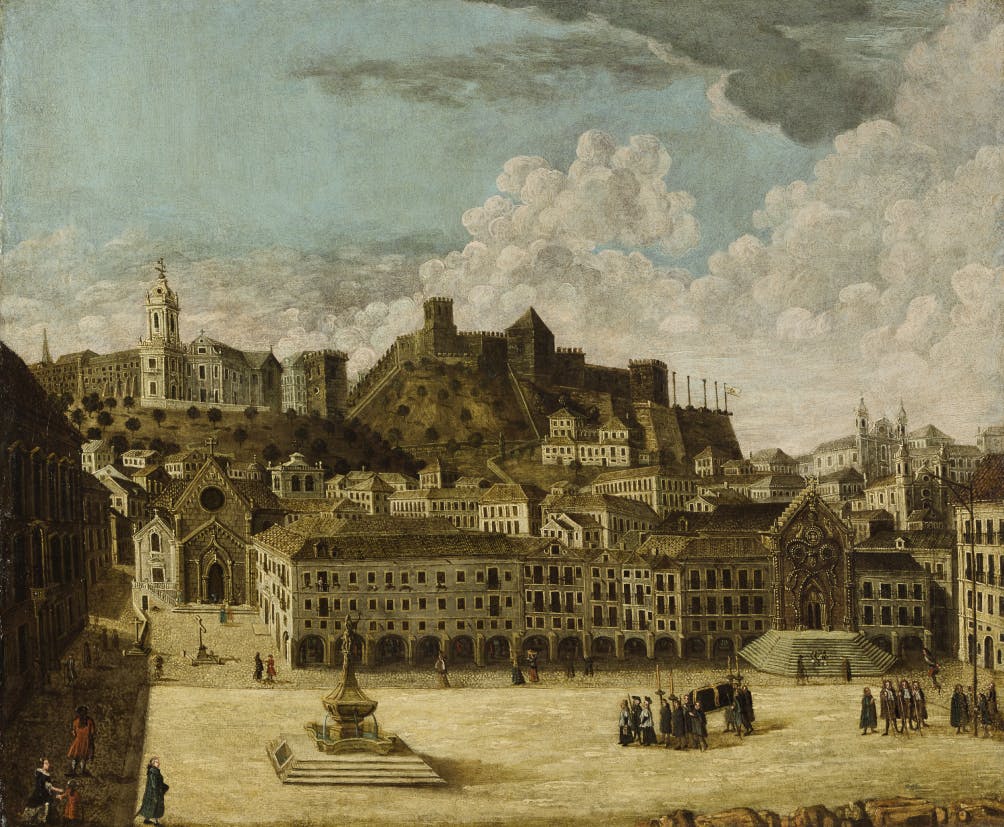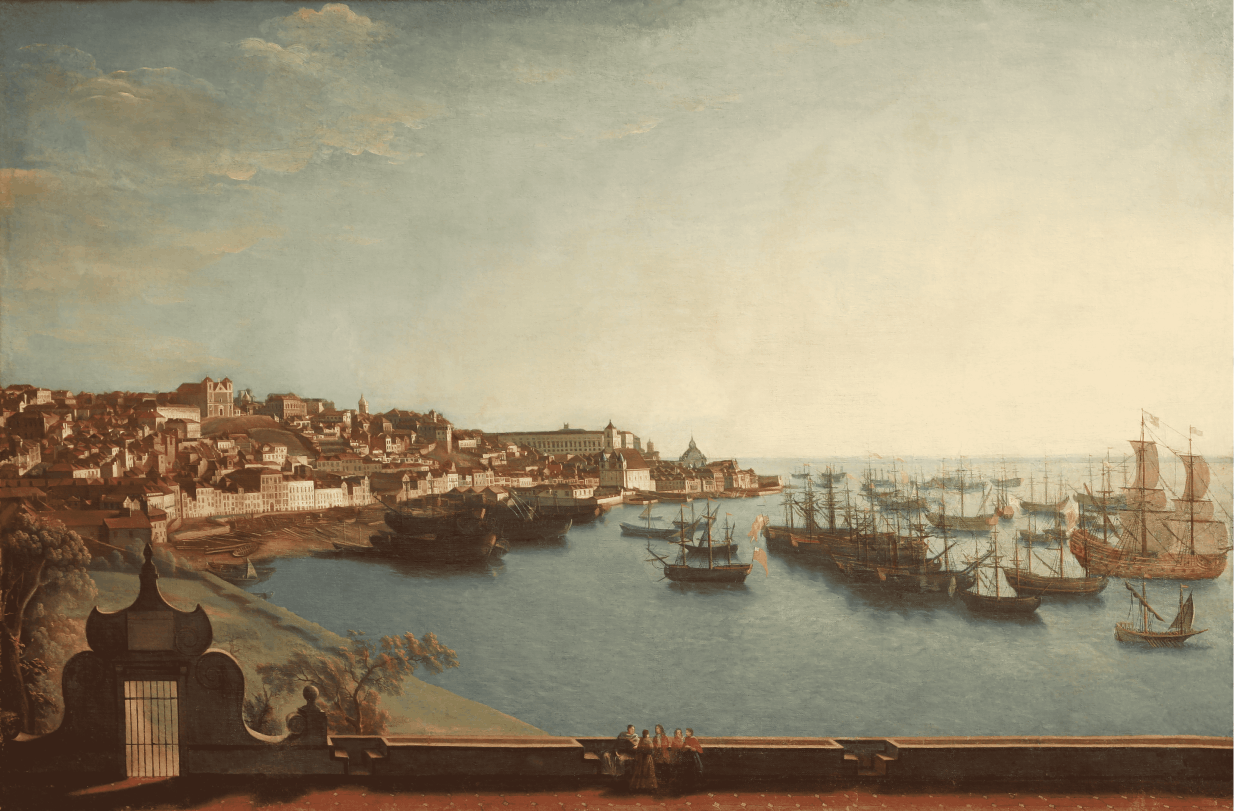The Lisbon that was lost
On the days before the Earthquake, Lisbon impressed foreigners and travellers with its wealth, palaces and churches. The torrent of gold that came from Brazil allowed feasting parties and sumptuous fireworks, as well as the building of majestic monuments such as the brand new Opera House –inaugurated in March 1755, it was famous for its richness, sumptuousness and sheer size: 600 people in the audience, four stories of cabins (38 in total) and a stage so deep that it could accommodate 25 horses.
There were the golden ciboria of the Patriarchal Church, the coffers of the House of India, the jewels of the Church of S. Roque, the clocks and the silver plates of the aristocratic families. Inside the churches, diamonds glittered on linen, curtains and dressings, and the forged wrought ironwork of precious metals shined on the altars. Another way to show off your wealth was to exhibit your staff, the most extreme example being the famous Patriarchal Church, with its legion of musicians and singers. The Cardinal Patriarch circulated through the streets on his car with dozens of servants, dressed in wide breeches, with red hats and red robes, embroidered in gold, imitating the Pope’s entourage.
In 1755 Lisbon, it was somewhat normal to possess luxurious objects from India and China—porcelain, silk, and furniture made from precious woods. True luxury, however, was found in products from Europe like the clothing of rich women, dressed in the French fashion, and wrought with Oriental shawls. The walls of the palaces could contain the rarest treasures, like in the house of Duque de Lafões, where paintings of Titian, Veronesi and Rubens were hanging. At Paço da Ribeira, where King José I lived, there were tapestries from Flanders, ceilings painted by Italian masters and Chinese porcelain, a vast library, and all the rare objects accumulated by centuries of diplomatic gifts.
From visitors letters, we also know that Lisbon was filthy and smelly, with narrow streets filled with stray dogs and large cattle, but still we can only but guess how incredibly beautiful and rich this city must have been!

